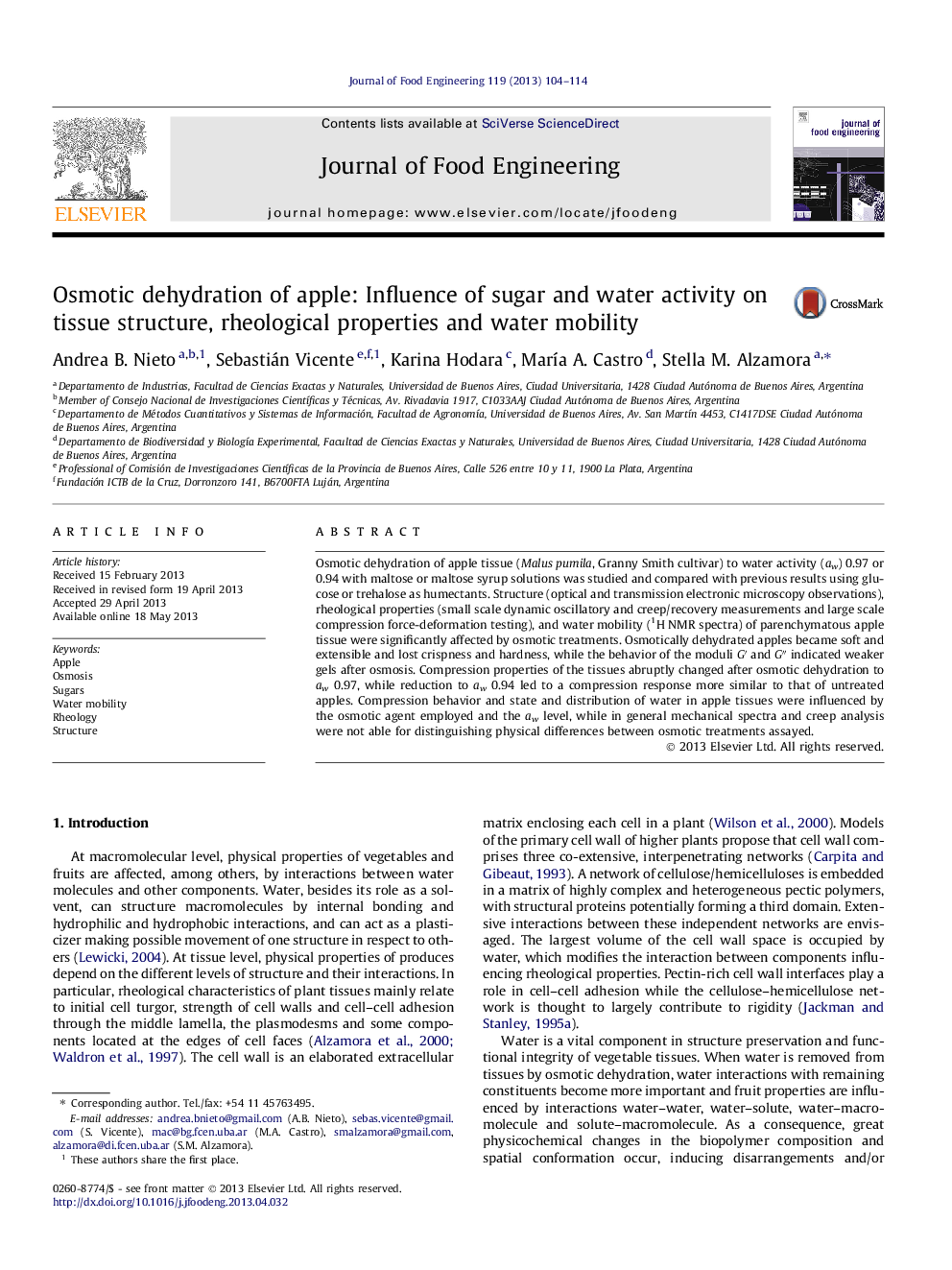| Article ID | Journal | Published Year | Pages | File Type |
|---|---|---|---|---|
| 10277454 | Journal of Food Engineering | 2013 | 11 Pages |
Abstract
Osmotic dehydration of apple tissue (Malus pumila, Granny Smith cultivar) to water activity (aw) 0.97 or 0.94 with maltose or maltose syrup solutions was studied and compared with previous results using glucose or trehalose as humectants. Structure (optical and transmission electronic microscopy observations), rheological properties (small scale dynamic oscillatory and creep/recovery measurements and large scale compression force-deformation testing), and water mobility (1H NMR spectra) of parenchymatous apple tissue were significantly affected by osmotic treatments. Osmotically dehydrated apples became soft and extensible and lost crispness and hardness, while the behavior of the moduli Gâ² and Gâ³ indicated weaker gels after osmosis. Compression properties of the tissues abruptly changed after osmotic dehydration to aw 0.97, while reduction to aw 0.94 led to a compression response more similar to that of untreated apples. Compression behavior and state and distribution of water in apple tissues were influenced by the osmotic agent employed and the aw level, while in general mechanical spectra and creep analysis were not able for distinguishing physical differences between osmotic treatments assayed.
Related Topics
Physical Sciences and Engineering
Chemical Engineering
Chemical Engineering (General)
Authors
Andrea B. Nieto, Sebastián Vicente, Karina Hodara, MarÃa A. Castro, Stella M. Alzamora,
